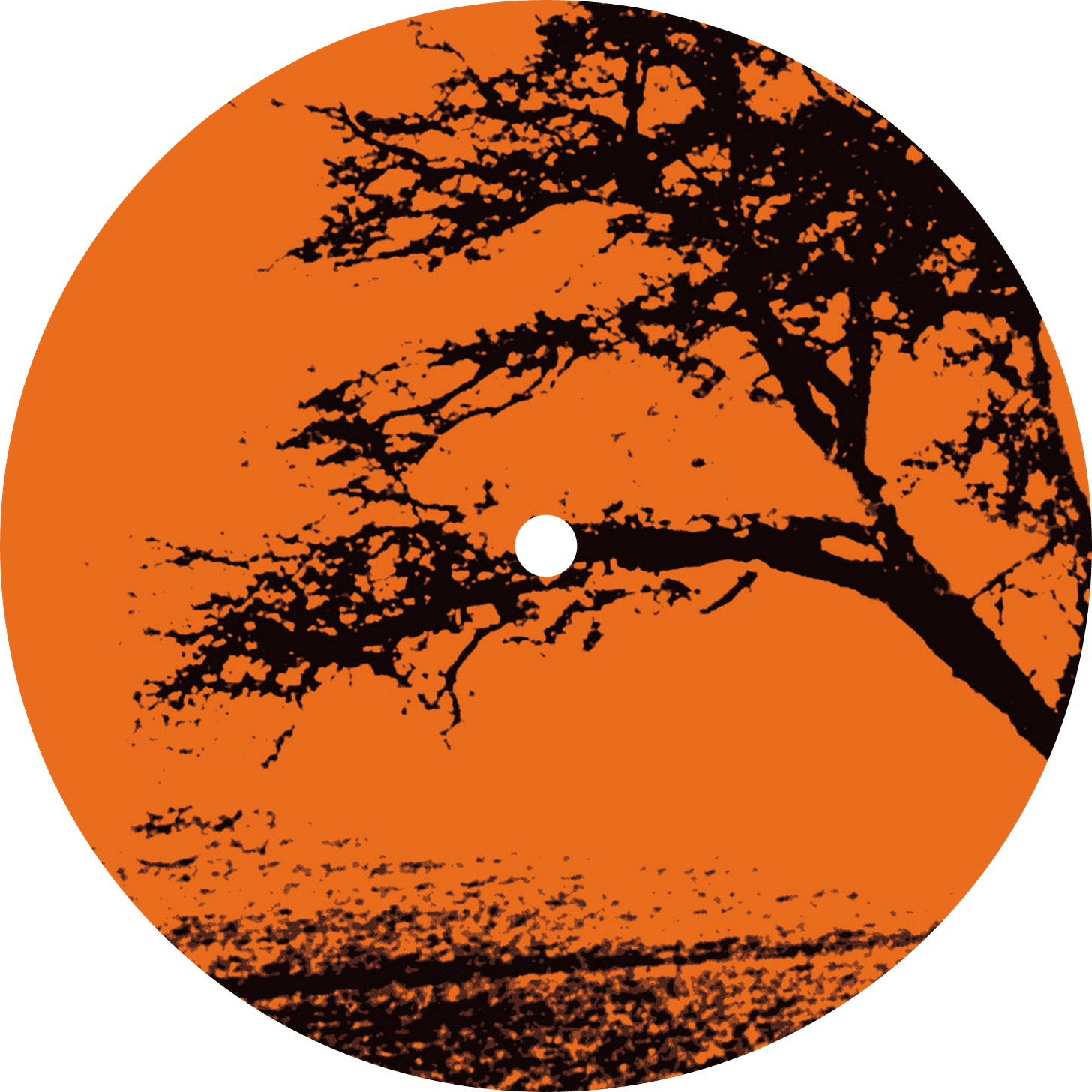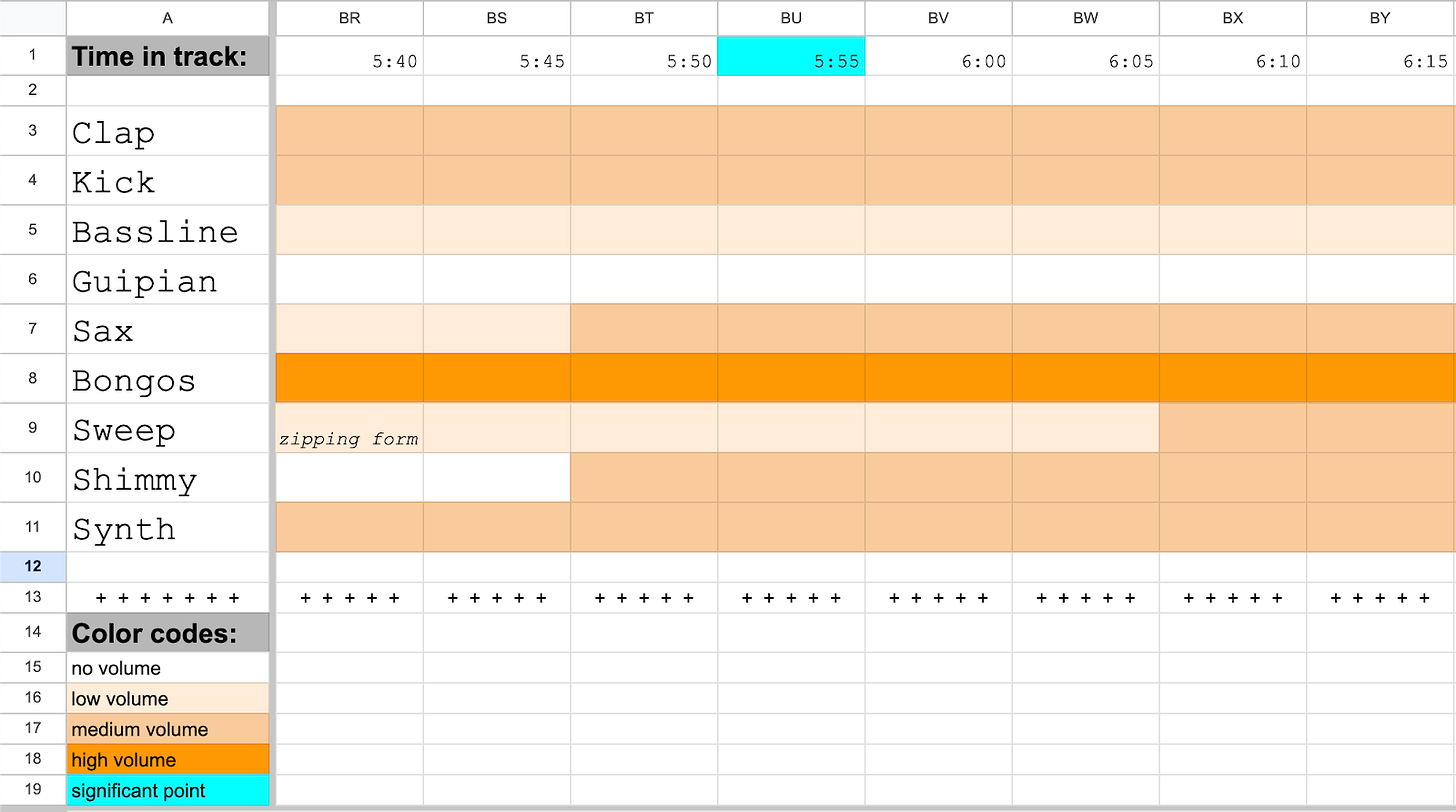+ + + + + + + +
Groove. It’s a product of the components, yet it lies beyond them and touches all of them. You can be a technical master, but without a razor-sharp instinct your music will be good, not great. Groove must arise from a deep personal conviction, there are no maps or formulas to follow.
The way Losoul produces reminds me of Kraftwerk’s perfect progressions. His awareness and sensitivity eases abstraction out of the machine, and a groove is born. Sound and spirit are united, forming each other in real time.
Purchase Link:
─────────────────────────
Let’s start by establishing the variables. From my listening, I identified nine different elements which play a key role in making Open Door tick. They are listed below in no particular order. Before we continue, I recommend playing the track and linking all of the sounds to their given names in your mind.
Clap - The crisp (but less crisp than usual) high noise that happens on the second and fourth beat of the pattern
Kick - The low noise that occurs at a regular interval throughout most of the track
Bassline - The cluster of bass notes that loops every four beats, going from a low to high tone
Guipian (guitar+piano) - The quick guitar playing that loops every four beats and is always linked to a sequence of three piano notes
Sax - The single saxophone note that enters loudly on the first beat of the pattern, and echoes quieter during beats two through four
Bongos - The bongos that follow a high…lowlow sound pattern, which happens two times in the span of four beats
Low end sweep - This appears in two different forms unlike the other elements listed here, it is best described as the sweeping oscillating sounds that have a similar tone to the kick drum
Hi-hat shimmy - The active hat pattern that makes you wiggle your head
Synth - The atonal synth that loops every four beats and appears around the halfway point of the track
One of the few things I learned from my business school education was the value of visual aids. Words can be hard to digest, but colorful bars and lines are either big or small, frequent or infrequent. Two years ago I took a class about optimizing workplace productivity, and through that class I was introduced to Gantt charts. These are usually used to plan business activities, but it occurred to me that it could be an effective way to chart a piece of music. For those of you who produce music on softwares like Ableton, this layout will look awfully familiar.
The nine elements each have a corresponding row that shows their level of volume at every 5-second interval. Some timestamps are highlighted in blue, which means I think they are important. I also attached the link to the full chart at the end of the article, and I encourage you to explore the music further by having it open and listening at the same time.
It’s unbelievable how much this track is able to do with so little. Seven out of the nine elements have been established before two minutes have passed, yet it manages to remain compelling for nine more minutes without any changes to the elements. Their tone and base pattern remain consistent throughout, the only thing happening is modulations in volume. The precision of this arrangement is magical.
(I recommend listening with headphones and having your volume louder than normal, some of the movements I describe below will be hard to notice otherwise)
What’s happening here? The bassline and guitar are a perfect match for each other, and the nuance of their interaction might just be my favorite part of the track. The clap is relatively soft, ceding its high end supremacy to the sharp sax note and the infectious shimmy. The kick is also deliberately smeared, with each beat seeming to flow into its neighbors. This allows the loops to build momentum as they continue, becoming more devious and danceable as they slither under your skin.
Taking the focus away from the kick and clap also blurs the line between the breakdowns and active passages. When our brains know “kick+clap = dance”, we tend to tune out a bit when those elements are absent from a track. By weakening those elements, you are encouraged to appreciate the more subtle dynamics of the mix. From a dancing perspective, this leads to continuous motion instead of cycling between bursts of energy and periods of rest.
The synergy of elements creates an effect that accumulates over the life of the track. Up until 3:40, the bassline has been carrying the groove, which places extra emphasis on the kick as they both live in the low end. When the bongos are introduced, they shift attention to the shimmy, speeding up your movement. These are moments of realization: the swing in the lower area is still there, and now you truly feel the action in both portions of the mix.
This may not be universal, but as a dancer I find that lows move the legs and hips, highs move the arms and head, and melodies play out in the mind, determining the overall mood. The lack of progression that would constitute a typical melody somewhat removes mood from the equation, which makes the tension in the structure even more apparent.
The guitar drops out for a minute in the middle of the track, corresponding with the introduction of an unsettling synth. After it has been given some time to settle in, the shimmy returns, driving everything back into motion. The mood is much darker, almost industrial as the zipper, sax, and synth conversation dwells in the forefront of the mix.
We come to understand that when context has been manipulated, our traditional expectations do not hold. Things feel completely different, and only one element is missing. Somehow, we have been forced to latch onto a miniscule guitar and piano loop as our only source of melody.
Everything is working here. As one thing gets quieter, something else stays the same, but it seems louder. The synth calls and the sax responds, the bass and guitar squirm beneath a veil, and the bongos are toying with the clap. There’s a great deal of movement, but it never becomes overwhelming because it’s up to you to seek it out. In a sense, the first seven minutes of this track are training you to listen differently, which allows you to fully enjoy the mastery at the end.
Normally I don’t feel compelled to mention the history around the tracks I discuss because I believe good music and analysis speak for themselves, but in this case a bit of background makes Open Door even more astounding. This track first came out in 1996, when the hardcore sound was at the forefront of electronic music. Things were fast, pounding, exuberant, and melody-centered.
Imagine you’re a German twentysomething living in Frankfurt. One night, you find yourself at a small club in the city center. The sun is about to come up, there’s powder falling out of your nose, and you hear Open Door for the first time.
If it makes people move, things are moving forward.
+ + + + + + + +
Further research:
The complete chart
Click the arrow in the top right corner so you can see it all, I also highly recommend viewing it on a computer for the best experience
Some ideas to try:
Listen to the track and scroll through the chart from start to finish
Listen to one element closely and try to hear the tiny changes that aren’t captured in the chart
Zoom out on the webpage and observe the development from a birds-eye view
Focus on the interactions between two different elements
Close your eyes and press play on a random part of the track, then try to find what point you are at based on the chart
Fun interview with Losoul from 2013 featuring good insights about the role of emotion in music, a good soundtrack, and good car washing footage
Amazing mix done by Playhouse co-founder Ata and Panorama Bar resident nd_baumecker that captures the vibe of Frankfurt’s Wild Pitch Club, one of Europe’s best house-focused venues during the 1990s










Beautiful article, full of passion and admiration!
You're definitely more of an expressive dancer than I am, I only know how to move my head. Unless I serendipitously find myself being that twentysomething living in Frankfurt...
Thanks for helping me understand this music, never understood all the nuances. I still need to learn more.